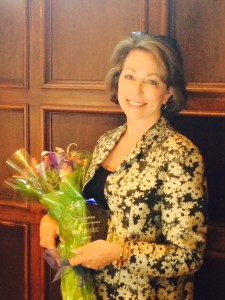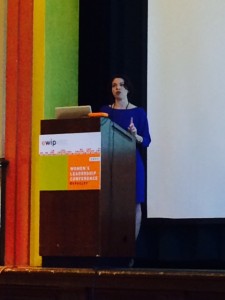This past week, I had the rare treat to take a day to attend the Exceptional Women in Publishing conference in Berkeley, Calif., an event that always provides leading-edge information, great experiences, and productive networking.
This Year’s EWIP Award Winner
 One of the highlights was Susan Goldberg, editor in chief of National Geographic, who was this year’s recipient of the Exceptional Women in Publishing Award. While hearing from Susan is always an insightful experience (see our May 2014 Women in Media interview), her speech at the event raised some great issues and questions about the role of women in media.
One of the highlights was Susan Goldberg, editor in chief of National Geographic, who was this year’s recipient of the Exceptional Women in Publishing Award. While hearing from Susan is always an insightful experience (see our May 2014 Women in Media interview), her speech at the event raised some great issues and questions about the role of women in media.
She reflected on Facebook COO Sheryl Sandberg’s concept of “leaning in”:
“The problem isn’t the direction of the lean. It’s the precariousness of the balance—how shockingly easy it is to fall over, forward, or back practicing journalism while female. How easy it is to be labeled “bossy” and “pushy” and “difficult” for the same behaviors that make men “leaders” and “assertive” and “decisive.”
These are among the reasons that so many talented women take themselves out of a fight they feel they can’t win. It’s why we begin with a significant majority of young women graduating from journalism schools and a generation later end up with a significant minority of middle-age women leading newsrooms.
The figures are startling: 64% of all graduates from journalism and mass communication programs are female; 36% of the journalism workforce is female; 23% of journalism leaders are female. From 64% to 23%—it’s like falling off a cliff. Don’t let anyone tell you this is a “pipeline problem.”
Women’s Struggles, Women’s Roles
 Jory Des Jardins, co-founder of BlogHer and now senior vice president of global strategic alliances at SheKnows Media, gave a compelling talk about how women bloggers (“mommy bloggers”) have achieved acceptance as competent and well-compensated content creators, citing a very interesting evolution and struggle to get there through the companies she has helped grow.
Jory Des Jardins, co-founder of BlogHer and now senior vice president of global strategic alliances at SheKnows Media, gave a compelling talk about how women bloggers (“mommy bloggers”) have achieved acceptance as competent and well-compensated content creators, citing a very interesting evolution and struggle to get there through the companies she has helped grow.
Maria Streshinsky, editor in chief at Pacific Standard (and also a TFP Women in Media interviewee), talked about bullying and empathy in the workplace, hinting at some upcoming stories that would dive into these issues more deeply.
Mariana Santos, director of interactive and animation at Fusion, and founder of Chicas Poderosas, profiled her journey from an internship where she helped break the WikiLeaks story to her latest work in helping female Latin American journalists to think big and work as effective teams to break big stories with compelling content.
It’s All About the Data
Aside from the frank and much-needed discussion about breaking down the barriers for women in the workplace, my favorite event sessions focused on data-driven content and using data visualization in storytelling. Given the advent of big data, this is where I see the next wave in content.
Highlights were:
LaToya Drake, of the Google Media Tools division, was a gold mine of information about some amazing tools Google has developed and continues to work on to assist with searching or mining for content that many really don’t know about. I’m saving some of this detail for a future in-depth article, but did you know that:
- You can drag and drop an image into a Google search field and it will attempt to identify that image for you, including location and rights?
- You can narrow an image search by color or location?
- You can use Google’s My Maps tools to create map data points for searches you create? LaToya’s example was dog parks or areas where dogs can be off-leash in Australia. She then changed the pin icon to the image of a dog. Fun!
This is just the tip of the iceberg of amazingly cool (and scary) stuff.
And take note: LaToya’s job is to teach media organizations how to leverage these deeper tools for data portrayal.
Another panel on data visualization featured Jaeah J. Lee, a reporter at Mother Jones; Claudia Nunez, founder of Migrahack; Tara Walker, data analyst at Tableau Software; and Megan Wells, a data journalist at WisePiggy.
The common point in these discussions was how data can help journalists create more compelling stories, ones that can prompt action and have a greater impact. Several important examples were cited by the panelists, including education about immigration and discrimination as well as validation of (or in some cases, correction of) reported information, among other topics.
Overall, this year’s Exceptional Women in Publishing conference provided a wealth of information and insights on not only the successes of women in media—as well as the barriers they still face—but also the exciting developments we need to pay attention to in order to succeed in the ever-evolving content business.
Posted by: Margot Knorr Mancini



